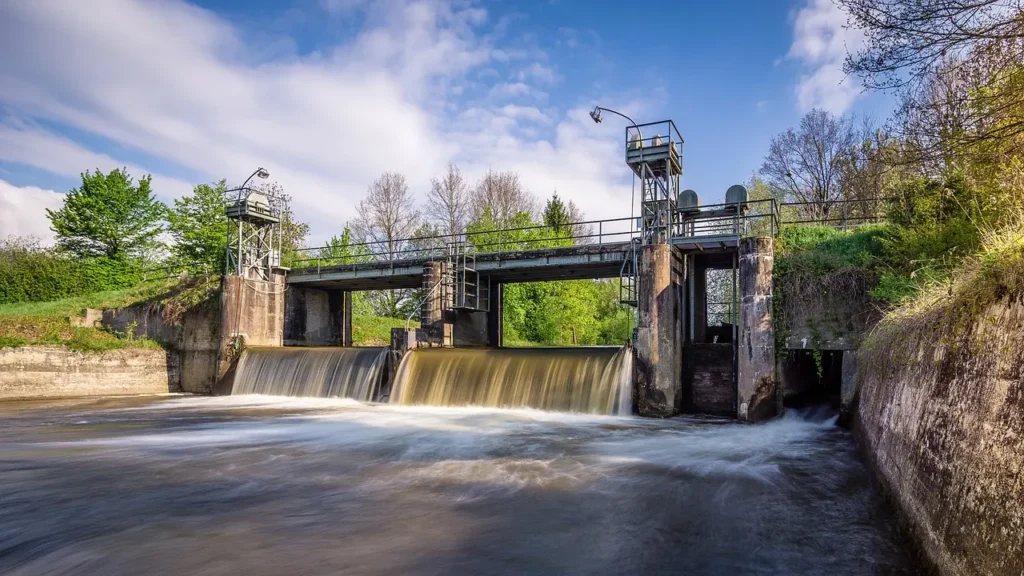Environmental Impact of Hydropower
3 minute readHydropower offers clean electricity but also alters ecosystems, water quality, and greenhouse gas levels.
Home > Learning Center > Coal vs Natural Gas: Comparing Fossil Fuels
3 minute read • Last update October 2024

Coal and natural gas are both fossil fuels burned for energy generation around the globe, but they are very different in terms of their efficiency, environmental impact, cost, and availability.
| Comparison | Natural Gas | Coal |
|---|---|---|
| Efficiency | 45-60% | 33-40% |
| Environmental impact | 50-60% less than coal | High carbon emissions |
| Cost | Very affordable in recent history | Historically very cheap, but recently costs are rising |
| Availability | Widely available, but in some cases requires more infrastructure to extract | Coal reserves are very abundant, but mining is labor intensive |
The history of U.S. fossil fuel energy generation is a long one. For most of the 20th century, coal was the backbone of electricity generation in the United States. Coal’s abundance helped to quickly establish it as the primary fuel for industrialization and widespread adoption of electricity in households across the country. In the first half of the century, natural gas was mainly used for heating. The use of natural gas was limited by the then high costs for extraction and transportation.
In the 1970s and 1980s, the oil crisis spurred further interest in alternative fuels. While coal remained the central fuel for electricity generation, investment in the infrastructure for natural gas began to grow rather quickly. Around the same time, increasing awareness and concern regarding global warming and air pollution led to regulations that started to limit emissions from coal. Natural gas has relatively lower emissions compared to coal and became more attractive as an alternative for both heating and electricity generation.
The development of combined-cycle gas turbines in the 1990s led to significant improvements in the efficiency of natural gas power plants. This helped make natural gas more competitive thanks to reduced costs associated with running the plants. Pipeline infrastructure and anti-coal environmental regulations both continued to expand into the early 2000s. At the same time, grids across the nation began to deregulate and the introduction of market forces, especially in Texas, continued to drive the adoption of natural gas over coal.
From the late 2000s to the 2020s, fracking and drilling saw a massive boom that continued to dramatically decrease cost and increase supply of natural gas. The United States became one of the largest natural gas producers around the globe. Throughout this time, coal plans were retired and decommissioned, while new natural gas plants continued to come online.
In recent years, renewables have become a significant force in the electricity generation sector. Due to the unfortunate volatility and intermittency of renewables, natural gas has remained an important part of the electricity mix. Unlike coal plants, natural gas power plants can be turned on and off rather quickly, which makes them a great partner to renewables when wind and solar go offline.
Graham Lumley, Digital Marketing Manager at BKV Energy, leads digital and traditional marketing strategies, focusing on educating Texans about the state's deregulated energy market. With over 8 years of marketing experience, he creates content to help consumers understand and save on their energy bills, bringing a fresh and dynamic approach to the industry.

Hydropower offers clean electricity but also alters ecosystems, water quality, and greenhouse gas levels.

Uncover the environmental impact of geothermal energy, from low emissions to pollution risks and seismic concerns. Learn how geothermal stacks up as a clean energy source.
Get $50 off your electric bill!
Use code BKVEJOINUS50
Enter your zip code to shop BKV Energy's affordable, fixed-rate Texas electricity plans. Use the promo code for $50 off your electric bill.